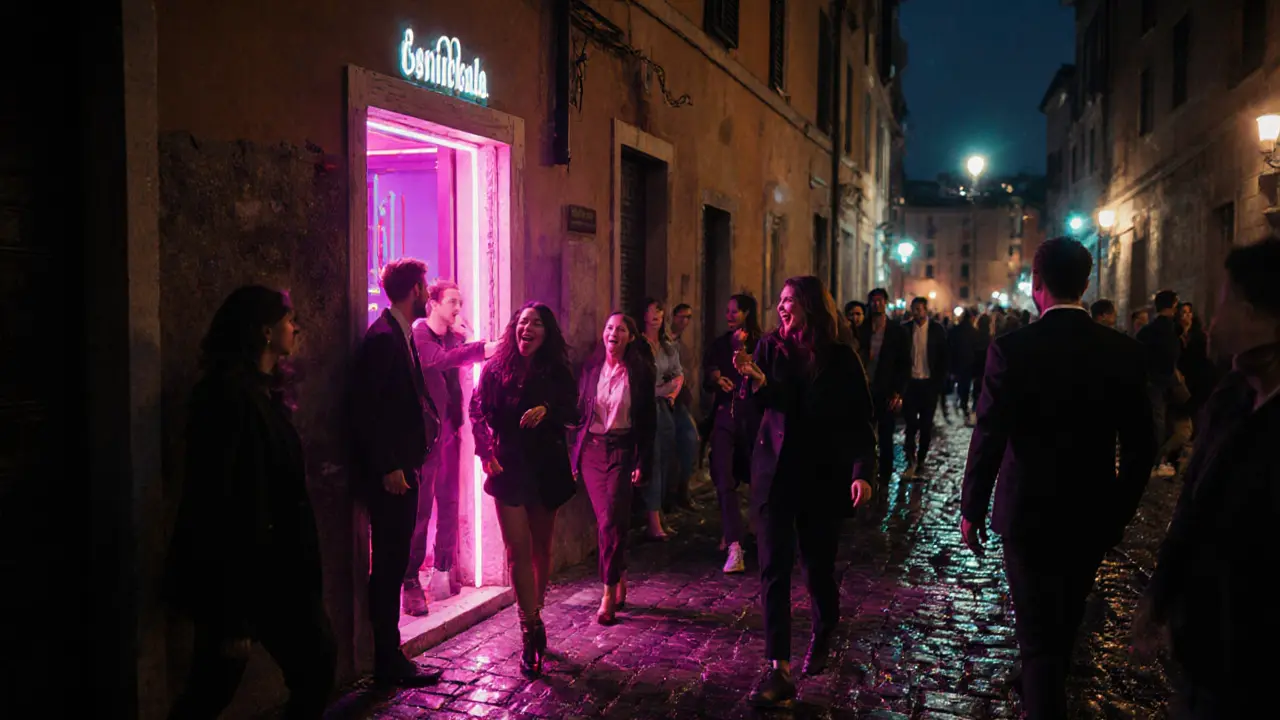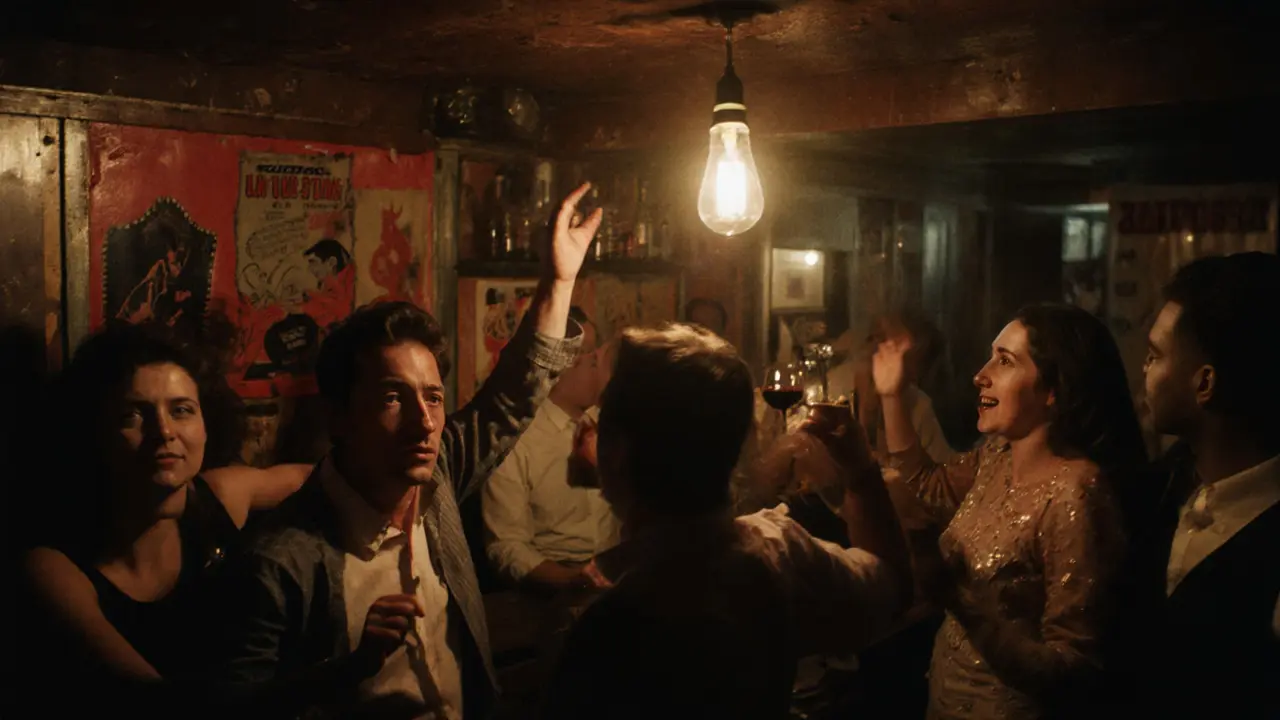
Rome isn’t just ancient ruins and espresso bars. When the sun goes down, the city transforms. The cobblestone streets fill with laughter, bass thumps through alleyways, and people spill out of hidden doors into neon-lit rooms where the night has only just begun. If you’re looking to dance till late in Rome, you don’t need to go to Ibiza or Berlin. The best clubs are right here - and they’re not what you expect.
Forget the tourist traps
Most guidebooks point you to the same three clubs near Piazza Navona. They’re crowded, overpriced, and play the same Top 40 hits you hear at home. Skip them. The real Rome nightlife doesn’t advertise itself. It’s tucked behind unmarked doors, down narrow alleys near Testaccio, or hidden in converted warehouses near Ostiense. These places don’t need signs. They’ve got lines out the door because locals know where the real beats are.
Take Teatro India. It’s not a club in the traditional sense - it’s a cultural center that turns into a dance floor after midnight. On weekends, DJs spin underground techno, house, and experimental sounds. The crowd? Artists, students, musicians, and travelers who’ve heard about it from someone who heard about it from someone else. No velvet ropes. No dress codes. Just good music and a vibe that feels like you stumbled into a secret.
Where the locals go
Head to La Cucina in Trastevere. It’s a small, dimly lit basement bar with a dance floor barely big enough for two people to move side by side. But on Friday and Saturday nights, it’s packed. The music? Deep house mixed with Italian disco classics. The drinks? Craft cocktails under €10. The door guy? He’ll let you in if you’re not wearing flip-flops and a tourist T-shirt. That’s it.
Or try Ex Dogana - a former customs warehouse turned into a multi-room club in Ostiense. One room plays hip-hop and R&B. Another is all techno. The third? A chill lounge with vinyl records spinning and people talking over wine. It opens at 11 p.m. and doesn’t clear out until 6 a.m. You can grab pizza from the food truck outside at 3 a.m. and still dance in your socks.
What to expect at 2 a.m.
Rome’s clubs don’t follow the 1 a.m. closing rule like in Paris or London. Most don’t even start heating up until midnight. By 2 a.m., the dance floors are full. People are sweating, laughing, singing along to Italian pop hits remixed with electronic beats. You’ll see groups of friends in designer clothes dancing next to backpackers in ripped jeans. No one cares. The music is the only rule.
Don’t expect VIP tables with bottle service. That’s for hotels in the city center. Here, it’s about the music, the energy, and the freedom. The bouncers don’t check IDs unless you look under 25. And even then, they’ll let you in if you’ve got a friend who’s already inside.

How to find the right club for you
Not all clubs in Rome are the same. Here’s how to pick yours:
- Love techno and underground sounds? Go to Teatro India or La Cucina on weekends.
- Prefer hip-hop and R&B? Try Ex Dogana or Le Vele near the Porta Portese market.
- Want a chill vibe with good cocktails? Head to Bar San Calisto in Trastevere - it’s a bar that turns into a late-night dance spot after 1 a.m.
- Looking for something wild and unpredictable? Check La Soffitta - it changes its theme every week. One night it’s 90s rave, the next it’s Italian indie rock.
Pro tip: Don’t rely on Google Maps. Use Instagram. Search #romenightlife or #romenightclub. Look at recent posts from the last 48 hours. That’s how you’ll find who’s playing, where the crowd is, and what the vibe feels like right now.
Timing matters
Rome’s nightlife runs on its own clock. Most clubs don’t open until 11 p.m. or midnight. Show up at 10 p.m., and you’ll be the only one there. Wait until 1 a.m., and you’ll find the real energy. Most places stay open until 6 a.m., but the real party ends around 4 a.m. - when the last DJ drops a classic and everyone starts singing along.
Public transport shuts down at 1:30 a.m. After that, you’ll need a taxi or ride-share. Uber works, but it’s expensive. Look for local apps like FreeNow or Beat. They’re cheaper and more reliable in Rome. Or just walk. The city is safe at night if you stick to well-lit streets. Many clubs are within walking distance of each other in Trastevere, Testaccio, and Ostiense.
What to wear
There’s no strict dress code - but there’s an unspoken one. You won’t get in wearing flip-flops, shorts, or a baseball cap. Locals dress smart-casual: dark jeans, a nice shirt or blouse, clean sneakers or boots. No tank tops. No logos. No flashy jewelry. You don’t need to look rich. You just need to look like you belong.
Women often wear dresses or skirts with heels. Men wear button-down shirts or hoodies with tailored pants. It’s not about being fancy. It’s about respect. Rome’s clubs are spaces where people put effort in - even if it’s just a good haircut and a clean pair of shoes.

Drinks and prices
A cocktail at a tourist bar in the center? €15. At a local club? €8. A beer? €4. A glass of wine? €5. Most clubs don’t charge cover before midnight. After that, it’s usually €10-€15. Some places let you in free if you buy a drink. Others have a pay-what-you-want policy - you drop cash in a jar as you walk in.
Don’t be fooled by “all-night drink specials.” They’re usually just cheap soda mixed with cheap liquor. Stick to the house cocktails or local wines. Rome has some of the best wine in Italy - and you can get a decent glass for less than you’d pay for a coffee in New York.
Why Rome’s nightlife is different
It’s not about luxury. It’s not about exclusivity. It’s about connection. In Rome, the night is an extension of the day. You eat dinner at 9 p.m., walk around for an hour, then find a place where the music pulls you in. You don’t go out to be seen. You go out because you feel alive.
There’s no club in Rome that feels like a corporate brand. No chains. No franchises. Every place has a story. The owner might be a former DJ who left Berlin to come home. The bartender might be a painter who only works nights. The music might be mixed on old vinyl from a garage sale.
That’s why people come back. Not for the lights. Not for the drinks. But for the feeling - like you’ve found a piece of the city that doesn’t exist in guidebooks or Instagram posts.
Final tip: Be present
Put your phone away. Look around. Talk to the person next to you. Ask where they’re from. Ask what song they’re dancing to. Rome’s nightlife isn’t a checklist. It’s a moment. And if you’re lucky, it’ll be the one you remember long after you’ve left.
What time do night clubs in Rome open and close?
Most clubs in Rome open between 11 p.m. and midnight and stay open until 6 a.m. The real energy starts after 1 a.m., and the crowd doesn’t thin out until 4 a.m. Public transport stops running at 1:30 a.m., so plan for a taxi or ride-share after that.
Do I need to buy tickets in advance for clubs in Rome?
Usually not. Most clubs don’t require advance tickets unless it’s a special event or a guest DJ night. Cover charges are paid at the door, typically between €10 and €15 after midnight. Some places are free if you arrive before midnight or buy a drink.
Is Rome’s nightlife safe for tourists?
Yes, if you use common sense. Stick to well-known neighborhoods like Trastevere, Testaccio, and Ostiense. Avoid poorly lit alleys after 3 a.m. Don’t carry large amounts of cash. Most clubs have security, and locals are generally friendly. The biggest risk is overpriced taxis - always use apps like FreeNow or Beat.
What’s the best night to go out in Rome?
Friday and Saturday nights are the busiest and most vibrant. Sunday nights are quieter but still lively in spots like Ex Dogana and La Cucina. If you want to avoid crowds, try Thursday - many clubs have themed nights and fewer tourists.
Can I dance in Rome if I don’t speak Italian?
Absolutely. Music is the universal language here. You won’t need to speak Italian to enjoy the night. Most staff speak basic English, and the vibe is welcoming. Just smile, follow the beat, and don’t be afraid to ask someone what song is playing.



